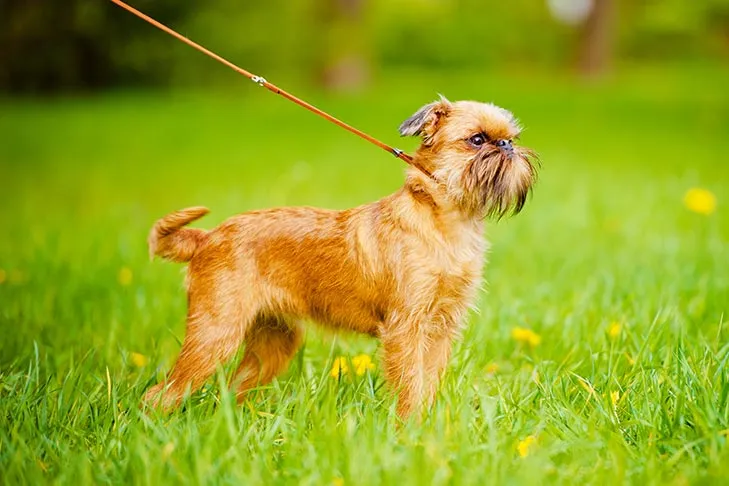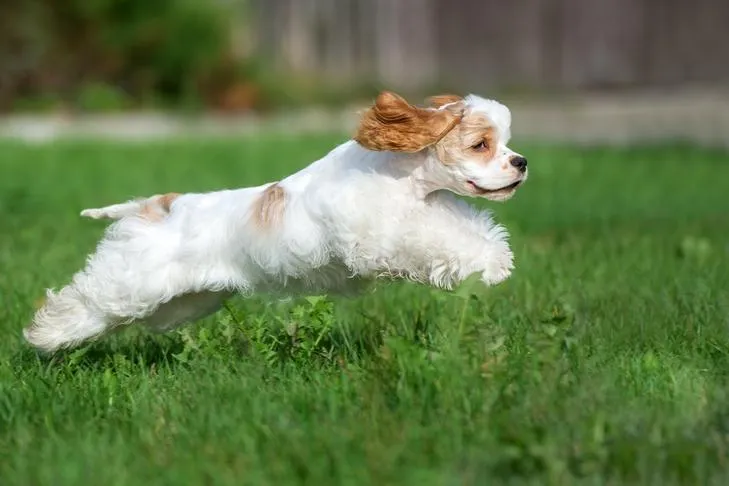Teaching your puppy to “come on command” – also known as recall – is arguably one of the most critical skills they will ever learn. For any puppy parent, mastering How To Train A Puppy To Come On Command is a rewarding journey that ensures both their safety and your peace of mind. Puppies are naturally curious and easily distracted by the vast, exciting world around them. Each time we ask our furry friend to return to us, we are essentially asking them to disengage from whatever captivating scent, sight, or sound has their attention. To build a truly reliable recall, our primary goal is to teach our puppies that being near us is the absolute best place to be, offering the most fun and high-value rewards. This foundational training not only strengthens your bond but also provides a vital safety net in unexpected situations.
What is Reliable Recall for a Puppy?
Reliable recall means that when you give your puppy the “come” cue, you are nearly certain they will respond enthusiastically and quickly. While puppies, like all dogs, aren’t robots and there’s never a 100% guarantee, our aim is to achieve the highest possible level of consistency for this lifesaving skill. Developing a strong recall is particularly important if you envision allowing your puppy off-leash in designated safe areas like fenced yards or dog parks as they grow. Moreover, a robust recall is indispensable in emergency scenarios, giving you the ability to quickly get your puppy out of harm’s way. It’s a skill that requires patience, consistency, and a deep understanding of positive reinforcement tailored to a young dog’s learning style.
Alternatives for Puppy Off-Leash Play
Until your puppy’s recall is consistently reliable, there is absolutely no shame in keeping them on a leash when outside of securely fenced areas. Prioritizing your puppy’s safety is paramount. Instead of immediate off-leash freedom, consider letting them play in securely fenced environments where you have control, or utilize a long leash (15-30 feet) in open, safe spaces. These options provide your puppy with more room to explore, sniff, and burn off energy while ensuring they remain safely connected to you.
 A young Brussels Griffon puppy attentively standing on a long leash in a grassy park.
A young Brussels Griffon puppy attentively standing on a long leash in a grassy park.
Regardless of how strong you believe your puppy’s recall is, it is crucial to always respect and adhere to all local leash laws. This applies not only to public parks and trails but also to your own front yard or any unfenced area on your property. Local, state, and national parks almost universally enforce these regulations for the safety of all visitors and wildlife. Responsible pet ownership includes understanding and following these important guidelines.
Effective Puppy Recall Training Methods
A key component of successful puppy recall training is to transform the learning process into an engaging and enjoyable game for your puppy. Begin your training sessions in a calm, low-distraction environment, such as inside your home. Start by showing your puppy a favorite toy or a highly palatable treat to get their attention. As your puppy begins to move towards you, offer enthusiastic verbal praise, and immediately reward them with the treat or toy upon arrival. After several repetitions, once your puppy consistently looks at you and starts to approach, you can introduce your chosen verbal cue – common examples include “Come!” or “Here!”. It’s vital to only introduce the verbal cue when you are confident your puppy is already in the act of coming towards you, ensuring a positive association.
As your puppy progresses, you can gradually increase the challenge. Start by asking your puppy to come before you physically show them the treat, relying solely on your verbal cue and body language. When they successfully reach you, make sure to reward them with a high-value treat, such as small pieces of cooked chicken, cheese, or beef liver, to reinforce that coming to you brings something truly wonderful. Simultaneously, slowly increase the distance between you and your puppy within your low-distraction indoor environment. This gradual progression is crucial for building a strong, reliable “come on command” foundation.
Fun Recall Games for Puppies
Incorporating games into your puppy’s recall training can make the process exciting and reinforce positive associations with coming to you. These activities are excellent ways to practice without making it feel like a chore for your young companion.
- Catch Me: While taking your puppy for a walk on a long leash, get their attention with a happy voice. Then, turn around and quickly run a few steps away from them. As your pup enthusiastically moves to follow you, exclaim your recall cue, like “Come!” Once they catch up, stop and lavish them with praise and a high-value treat or toy. Always ensure your puppy is attentive before you run to avoid any sudden jerks on the leash.
- Find Me: Once your puppy has a basic understanding of the recall cue, you can build both speed and excitement by calling them from another room in your house. When your puppy successfully “finds” you, shower them with abundant praise and a fantastic reward. This playful hide-and-seek style game is a fantastic way to make recall fun for both of you.
- Hot Potato: Gather two or more family members or friends, each equipped with some irresistible, high-value puppy treats. Stand a reasonable distance apart and take turns calling your puppy back and forth between you. Every time your puppy comes to the person who called them, they receive a generous reward. This game teaches your puppy to respond to their name and the “come” cue from different people and directions.
A very common and counterproductive training mistake is to recall your puppy, immediately put them on a leash, and then head straight home. Puppies are smart and will quickly learn to associate coming to you with the end of their fun, making them less likely to respond in the future. A much better practice method is to recall your puppy, offer praise and a treat, then release them with a clear “Go play!” cue, allowing them to return to their previous activity. This teaches them that coming to you often leads to more fun, not less. This also helps with broader obedience, preventing issues like how to train my dog to stop jumping on people when excited.
Avoiding “Poisoning the Cue” with Your Puppy
Have you ever found yourself repeatedly calling out, “Come! Come! Come! Come! Come! Please come!” to your puppy? If this scenario sounds familiar, your puppy’s recall cue might be what trainers refer to as a “poisoned cue.” This often happens unintentionally when the cue either loses its clear meaning or, worse, takes on a negative association for the puppy, leading them to ignore it. The easiest way to “poison” a recall cue is through overuse, repeating the word numerous times without your puppy responding effectively. This dilutes the meaning and makes the command less impactful.
 A joyful Cocker Spaniel puppy eagerly running across a green lawn during playtime.
A joyful Cocker Spaniel puppy eagerly running across a green lawn during playtime.
In such a situation, the most effective course of action is to change your verbal cue entirely. For instance, if you’ve been using “come,” consider switching to a fresh word like “here” or “close.” When introducing this new recall cue, you must go back to the fundamental basics of training, starting in a low-distraction environment and building up gradually, just as you did when initially teaching your puppy the command. By focusing on positive reinforcement and clear communication, you’ll lay the groundwork for a well-behaved companion, avoiding issues such as how to stop dog from jumping on sofa.
Essential Puppy Recall Training Tips
Building a bulletproof “come on command” for your puppy requires consistent effort and smart training strategies. Here are some key tips to keep in mind:
- Avoid Repeating Yourself: If you find yourself having to repeat your recall cue multiple times, it’s a strong indication that the current environment is too distracting for your puppy, or they haven’t yet mastered the skill at that particular level. Scale back the difficulty until they can succeed consistently.
- Reward Eye Contact: When you notice your puppy voluntarily looking at you or choosing to stay close, verbally praise them and immediately give them a treat. Initially, you might use many treats for this. You’re reinforcing a crucial lesson: great things happen when your puppy is near you and paying attention.
- Never Punish Your Puppy for Coming to You: Even if you feel frustrated because your puppy took an eternity to respond, always, always praise and reward their arrival. Punishing them for eventually coming will create a negative association with the recall cue, making them less likely to come in the future.
- Reward, Reward, Reward!: When training recalls, especially during the learning phase, always use the highest-value treats and toys your puppy absolutely loves. You want them to enthusiastically associate coming to you with receiving something truly incredible. Consistently rewarding good behavior helps reinforce desired actions and prevents unwanted behaviors like how to stop dog jumping on sofa.
- Practice Recalls Daily: Regular, short training sessions are far more effective than infrequent, long ones. Gradually increase the difficulty by introducing mild distractions, then more challenging ones. Moving too quickly through the stages will likely confuse your puppy and lead to less reliable recall.
- If Emergency Recall is Needed, Don’t Chase: If your puppy is running away in a dangerous situation, chasing them will likely turn it into a game for them, encouraging them to run even faster. Instead, try running away from your puppy in the opposite direction. This often sparks their natural chase instinct, inspiring them to follow you. As a dedicated puppy parent, mastering how to train your own service dog is a rewarding journey, and reliable recall is a cornerstone.
Conclusion
Teaching your puppy to “come on command” is more than just a trick; it’s a vital communication tool that ensures their safety and strengthens your bond. By understanding what reliable recall means for a young dog and consistently applying positive reinforcement techniques, you can transform a curious puppy into a responsive companion. Remember to make training a game, avoid poisoning the cue with repetition, and always reward your puppy’s efforts generously. With patience, dedication, and the right approach, you will successfully teach your puppy this lifesaving skill, paving the way for countless safe and enjoyable adventures together. Start practicing these techniques today and witness the incredible progress your puppy will make!
